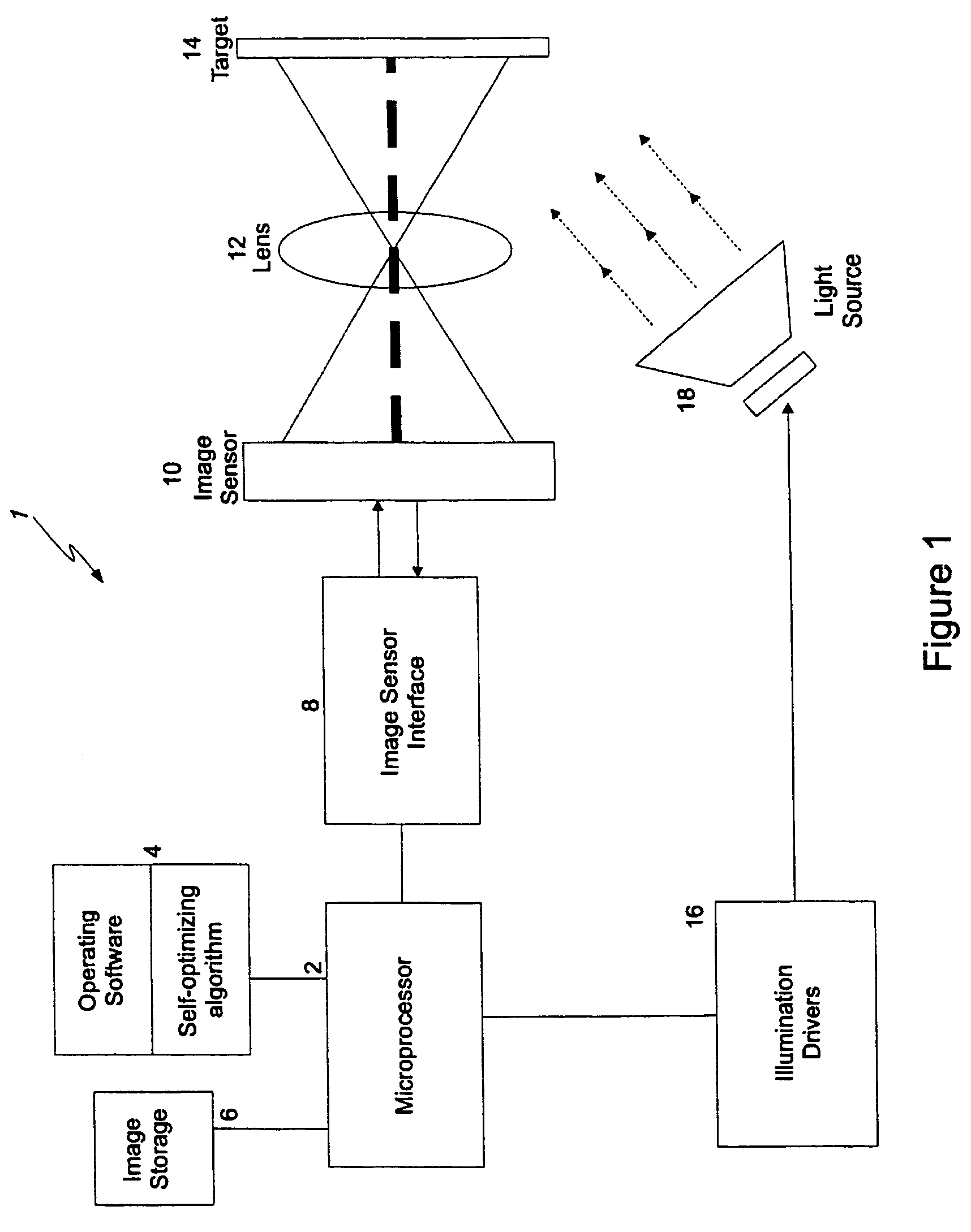Self-optimizing symbology reader
a symbology reader and self-optimization technology, applied in the field of symbology readers, can solve the problems of not disabling all unused decoding routs, requiring operator intervention, and user perception of “sluggishness” or latency in decoding operation, so as to reduce increase the integration time of symbology readers
- Summary
- Abstract
- Description
- Claims
- Application Information
AI Technical Summary
Benefits of technology
Problems solved by technology
Method used
Image
Examples
Embodiment Construction
[0029]For purposes of explanation, specific embodiments are set forth to provide a thorough understanding of the present invention. However, it will be understood by one skilled in the art, that the invention may be practiced without these specific details. Moreover, well-known elements, devices, process steps and the like are not set forth in detail in order to avoid obscuring the scope of the invention described.
[0030]In symbology readers, including scanner and image based readers, the invention provides methods for optimizing configuration parameters with limited need for operator intervention.
[0031]The method of self-optimization, in accordance with the present invention, may be implemented by the system shown in FIG. 1. An image based symbology reader 1 in accordance with the present invention comprises a microprocessor 2 that controls all aspects of the image capture, analysis, decoding and external host interface, and utilizes operating software stored in nonvolatile memory 4...
PUM
 Login to View More
Login to View More Abstract
Description
Claims
Application Information
 Login to View More
Login to View More - R&D
- Intellectual Property
- Life Sciences
- Materials
- Tech Scout
- Unparalleled Data Quality
- Higher Quality Content
- 60% Fewer Hallucinations
Browse by: Latest US Patents, China's latest patents, Technical Efficacy Thesaurus, Application Domain, Technology Topic, Popular Technical Reports.
© 2025 PatSnap. All rights reserved.Legal|Privacy policy|Modern Slavery Act Transparency Statement|Sitemap|About US| Contact US: help@patsnap.com



